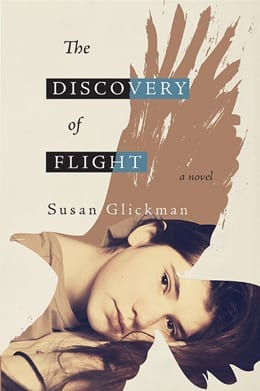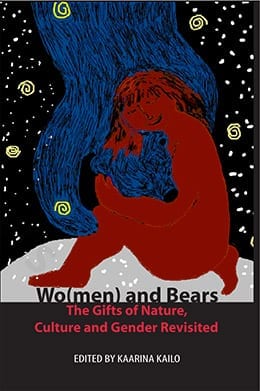Finalist, 2019 International Book Awards
(Fiction – Young Adult)
-
Macedonian rights sold to Prozart Media, Skopje, Macedonia
The Discovery of Flight is a novel in two voices about the relationship between two sisters, the older of whom is disabled by cerebral palsy and only able to communicate with assistive technology (she can control her computer by moving her eyes). It interweaves the fantasy novel sixteen-year-old Libby is writing for Sophie’s thirteenth birthday, and Sophie’s diary, in which she discusses the deteriorating condition of her older sister. The book’s title is also the title of Libby’s novel, in which Libby takes the form of a hawk telepathically linked to a girl who, like her sister, is a good artist. Sophie’s diary is in fact illustrated with the occasional black-and-white drawing. The sicker Libby gets, the more she retreats into her novel and the less she interacts with the outside world. Though the situation is tragic, Sophie’s voice is extremely funny and wry. In addition, through her storytelling, Libby becomes a heroic figure rather than a helpless victim. After Libby’s death, the girls’ mother presents Sophie with the novel and Sophie writes its final chapter, bringing the voices of the two girls together.
“A beautiful sibling duet. This uniquely structured novel is funny, frank, and utterly transporting.”
—Kyo Maclear, author of Birds, Art, Life
“The two voices–one sardonic, the other tender–blend seamlessly in this heartbreaking story that will appeal to fans of both realism and fantasy.”
—Kit Pearson, author of A Day of Signs and Wonders.
“Moving, imaginative, ultimately heroic and highly readable.”
—Robert Priest, author of the Spell Crossed trilogy and The Wolf is Back.








inannaadmin –
The Discovery of Flight by Susan Glickman
reviewed by Lesley Little
Resource Links – October 2018
Sophie’s older sister Libby has cerebral palsy and communicates through assistive technology that allows her to control her computer with her eyes. Libby is secretly writing a novel as a a surprise gift for Sophie’s 13th birthday but the main voice of this novel is Sophie’s, as she records events in a journal assigned as a Hebrew school project in preparation for her bat mitzvah. The novel begins with Sophie’s comments on her life and her admiration for her older sister as well as her sardonic take on the world in general.
The girls share an enjoyment of movies, an important one being Ladyhawke, the story of a cursed but beautiful young woman in Medieval times who is a hawk by day and woman by night. Libby extrapolates from this to create a girl and hawk who share a telepathic relationship. The chapters of Libby’s story are interspersed with Sophie’s continuing portrait of her life and her thoughts on just about everything.
This ingenious juxtaposition of a 12-year old’s reality and a handicapped 16-year-old’s fantasy develops the novel’s depth as it glides over day-to-day events and matters of life and death. Libby becomes less and less communicative as her story evolves and Sophie’s worry over this comes out as frustration. Sophie’s own life, however, is growing as it should and when Libby dies, Sophie expresses her gratitude for her sister’s gift by finishing the story Libby started.
The author has made Sophie’s final chapter of Libby’s story purposefully less wellwritten, yet it manages to convey adequately not only the relationship the two girls enjoyed but also a sense of peace and purpose to Libby’s short and truncated life.
inannaadmin –
The Discovery of Flight by Susan Glickman
reviewed by Charis Cotter
Quill and Quire – June 2018
https://quillandquire.com/review/the-discovery-of-flight/
The Discovery of Flight is about two sisters who write. Twelve-year-old Sophie is keeping a journal for her Hebrew class in preparation for her bat mitzvah, and 16-year-old Libby is penning a secret fantasy story for Sophie’s birthday. The novel is told in their alternating voices.
Sophie’s sections are accessible, funny, and direct as she writes about her day-to-day life. She doesn’t see the point of having a bat mitzvah and complains about learning her Torah chant and writing a speech. She makes friends with a boy and they work on a school project detailing how Christopher Columbus messed up big time. And she longs for a more conventional family life.
The tone of Libby’s passages is more muted; the reader gets to know her solely through the fantasy story she is writing. Libby has cerebral palsy-the only part of her body she can move is her eyes – and uses special computer software that responds when she blinks.
Sophie and Libby have always been close. In her journal, Sophie describes the scope of Libby’s life: bird-watching expeditions, reading books, watching movies. But Libby’s disease is progressing and she is becoming less and less responsive. Sophie expresses her pain and frustration about her sister’s condition with sharp insight and humour, illustrating her diary with funny drawings. Her narrative – warm, smart, and rebellious – provides the perfect counterpoint to Libby’s haunting, magical story.
Libby’s transcendent, courageous spirit it slowly revealed as her fantasy novel unfolds. After a medieval village is plundered by invaders, the inhabitants try to rebuild their community in another location. During this crisi, a young girl, named Terra, develops a telepathic link with a hawk and learns to see her world from a different perspective. Terra experiences danger, pain, and uncertainty about the future, relying on her inner resources and strength to survive. Meanwhile the hawk, Aya, leads a simple life of hunting and eating, not to mention the wild joy of flight. Being removed and distant from human concerns, Aya doesn’t understand why they make everything so complicated. The novel suggests that Aya represents Libby and Terra is Sophie.
The parallels between Libby’s fantasy novel and her life with her family are at the heart of this beautifully written book. The Discovery of Flight provides a compassionate perspective on a family living with a severely disabled child, but it also tells the funny, poignant story of a 12-year-old struggling with growing pains. Author Susan Glickman brings the voice of the two sisters together in a memorable and transformative ending.
inannaadmin –
The Discovery of Flight by Susan Glickman
reviewed by Bev Brenna
CM Magazine Volume XXIV, No. 29 – March 30, 2018
http://umanitoba.ca/cm/vol24/no29/
Grades 5-8 / Ages 10-13
Excerpt:
September 20th
You already know me, so I guess you want to know about the rest of my family. There are three others: my mother, my father, and my big sister, Libby. Dad looks after Mum, Mum looks after Libby, and Libby just looks. Literally. Because all she can control properly are her eyes.
Libby’s paralyzed; has been from birth. But you’d be amazed how much a person can communicate using nothing but her eyes if she’s as smart as my sister Libby…
—-
Part of the novel The Discovery of Flight, is written as compulsory journal entries from Sophie, a grade seven girl, to her Hebrew teacher, Mr. Davis. The purpose of the assignment is for the students to recognize important issues and somehow integrate them with the Torah portions they receive for their Bar or Bat Mitzvahs. Sophie’s topics range from family, to friends, to society, to self, and her voice is very compelling as a pre-teen critically examining her world.
Sophie often writes about her older sister, Libby, a teen with cerebral palsy. Libby communicates through eye movements, in earlier years by looking at picture cards and symbol sheets, and now using assistive technology in order to write on her own. Throughout the story, Libby’s physical health deteriorates, and she withdraws from Sophie in order to spend more and more time working on a secret project. After Libby’s death, Sophie learns that the project is a fantasy novel, dedicated to her.
CHAPTER ONE
Aya the hawk wakes when the first rays of the sun warm the treetops. Stretching her neck, she blinks her beautiful golden eyes and cocks her head to listen. The dawn chorus has begun, and a song of praise rises through the canopy.
This is how every day begins for Aya: heat, light, and music welcome her back to her community. She likes to rest quietly for several minutes on her perch, letting the outlines of the world fill in. Remaining motionless helps her to see and feel things clearly. Those who rush around, always busy, always anxious, miss so many variations of colour and smell and sound. The sky already blue at the horizon; leaves stroking each other like green feathers; the chatter of insects under bark; the rustling of small mammals in the grass far below about to assume their struggle to survive.
…Susan Glickman has created a compelling voice for Sophie, and the mechanism of using a journal to share Sophie’s thoughts and feelings is engaging…
While the plot of The Discovery of Flight does get bogged down in details, these details may be significantly interesting to readers who wish to explore family dynamics where characters with exceptionalities are concerned, and Glickman has done a notable job of authentic presentation of such information.
Renée Knapp –
The Discovery of Flight by Susan Glickman
reviewed by Carly Wiggins Searcy, McNeese State University
School Library Journal – November 1, 2018
https://www.slj.com/?reviewDetail=the-discovery-of-flight
Gr 5-8. A sensitive story of sisters, love, and loss, told via interweaving narratives. Precocious 12-year-old Sophie is focused on preparing for her Bat Mitzvah, improving her drawing abilities, and writing in her journal. Sophie’s older sister Libby, 16, is consumed with a secret project: she is writing a story to give to Sophie on her 13th birthday. Libby lives with cerebral palsy, and the allegorical tale she is crafting will give Sophie a new means for understanding her sister. Chapters alternate between Sophie’s realistic-fiction journal and the fantasy tale, “The Discovery of Flight,” written by Libby. This story within a story follows Aya the hawk, who discovers she can share the thoughts of a human girl named Terra. Aya and Terra’s symbiotic friendship mirror the changing relationship between Libby and Sophie. Chapters from Sophie’s journal capture the humor and awkward self-consciousness of its tween author. The realism of Sophie’s journal is reinforced by her increasingly skillful drawings.”
VERDICT: Recommended for larger libraries.